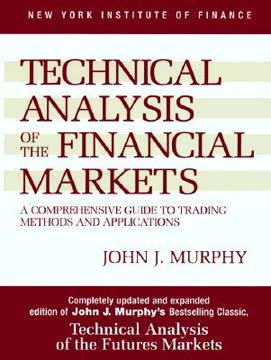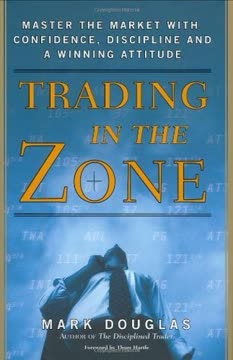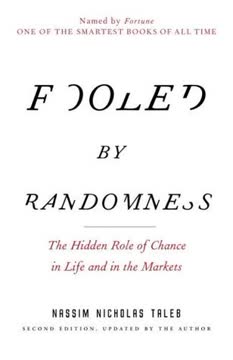Key Takeaways
1. השווקים נעים בעקבות היצע וביקוש, לא דעות אישיות
השווקים לא נעים כי הם רוצים, הם נעים כי הם חייבים.
היצע וביקוש מניעים את השווקים. מחירים עולים כאשר הביקוש עולה על ההיצע ונופלים כאשר ההיצע עולה על הביקוש. עיקרון בסיסי זה פועל ללא קשר לאינדיקטורים כלכליים, אירועי חדשות או דעות אישיות. סוחרים חייבים להתמקד בהתנהגות השוק בפועל ולא באמונות שלהם לגבי היכן המחירים "צריכים" להיות.
תגובות רגשיות מניעות מהלכים משמעותיים. השווקים לעיתים קרובות מבצעים מהלכים חדים כאשר מספיק סוחרים נלכדים בצד הלא נכון של עסקה. זה יוצר התפרצות של פחד, תסכול ורכישות או מכירות פאניות. סוחרים מקצועיים מנצלים את התגובות הרגשיות הללו על ידי מיקום עצמם בצד ההפוך.
גורמים מרכזיים לאי-סדרים בהיצע/ביקוש:
- קריאות מרג'ין שמחייבות נזילות
- פקודות עצירה שמתבצעות
- כניעה פסיכולוגית
2. מסחר מוצלח דורש משמעת ומחשבה מקצועית
רגשות הם בסדר בחתונות ובהלויות.
שלוט ברגשותיך. סוחרים מצליחים מפתחים את היכולת לעקוב אחרי תוכניות המסחר שלהם מבלי להיסחף על ידי פחד, תאווה או רגשות אחרים. זה דורש טיפוח משמעת ומחשבה מקצועית שמתמקדת בביצוע עקבי ולא בתוצאות של עסקה בודדת.
הימנע ממלכודות פסיכולוגיות נפוצות. סוחרים רבים מס sabotaging את עצמם באמצעות הרגלים הרסניים כמו מסחר יתר, רדיפת השוק או החזקת עמדות מפסידות זמן רב מדי. הכרה והתגברות על נטיות אלו היא קריטית להצלחה ארוכת טווח.
אתגרים פסיכולוגיים מרכזיים:
- פחד מהחמצה (FOMO)
- חוסר יכולת לקבל הפסדים קטנים
- ביטחון יתר לאחר רצפים מנצחים
- שיתוק אנליטי
3. הגדר את הטכנולוגיה שלך למסחר לביצועים אופטימליים
אם סוחרים יכולים לקבל את החלק הזה נכון, הם לפחות יהיו בעלי סיכוי להילחם על מגרש משחקים שווה עם כולם.
השקיע בחומרה ובתוכנה אמינים. המחשב ופלטפורמת הביצוע של סוחר הם כלים קריטיים. השקיע במערכת בעלת ביצועים גבוהים עם זיכרון RAM מספיק, מספר מסכים ופתרונות גיבוי חזקים כדי להימנע מהפסקות יקרות או שגיאות.
שמור והגן על הטכנולוגיה שלך. עדכן תוכנה באופן קבוע, הסר תוכנות ריגול, פצל כוננים קשיחים והטמע את מיטב הפרקטיקות בתחום הסייבר. תחזוקה מונעת זו מסייעת להבטיח פעולה חלקה במהלך שעות המסחר הקריטיות.
רכיבי טכנולוגיה חיוניים:
- מחשב עם זיכרון RAM גבוה (מינימום 1GB)
- מספר מסכים
- ספק כוח לא מופרע (UPS)
- חיבור אינטרנט אמין עם גיבוי
- תוכנת גרפים וביצוע ברמה מקצועית
4. הבן את הפנימיות של השוק כדי להעריך כיוונים יומיים
מוזיקאים יודעים לקרוא תווים; סוחרים חייבים לדעת לקרוא את השווקים.
נטר אינדיקטורים מרכזיים בשוק. סוחרי יומיים מצליחים מפתחים מיומנות בפרשנות פנימיות שונות בשוק כמו TICK, TRIN ויחס Put/Call. אינדיקטורים אלו מספקים תובנה על הלחץ הקנייה והמכירה הבסיסי שמניע את תנועות המחיר.
השתמש בפנימיות כדי לאשר הגדרות מסחר. במקום להסתמך רק על תנועת מחירים או אינדיקטורים טכניים, שלב פנימיות שוק כדי לאמת עסקאות פוטנציאליות ולהעריך את התחושה הכללית בשוק. גישה רב-ממדית זו משפרת את הסיכויים לעסקאות מוצלחות.
פנימיות שוק חשובות לעקוב אחריהן:
- NYSE TICK
- TRIN (מדד ארמס)
- יחס Put/Call
- קו התקדמות/ירידה
- ביצועי מגזר
5. השתמש בהגדרות ספציפיות כדי לזהות עסקאות בעלות סיכוי גבוה
מסחר ללא הגדרה ספציפית בראש זה כמו לטייל באמזונס בלי מצפן.
פיתח רפרטואר של הגדרות מוכחות. סוחרים מצליחים מתמקדים בכמה הגדרות מסחר בעלות סיכוי גבוה שמתאימות לאישיות שלהם ולסבילות הסיכון. הגדרות אלו מספקות גישה שיטתית לזיהוי עסקאות פוטנציאליות בתנאי שוק שונים.
שפר והתאם את ההגדרות באופן מתמשך. בדוק באופן קבוע את הביצועים של הגדרות המסחר שלך ועשה התאמות ככל שהתנאים בשוק מתפתחים. היה מוכן לזרוק הגדרות שאינן פועלות ולחקור הזדמנויות חדשות כאשר הן מתעוררות.
דוגמאות להגדרות מסחר המתוארות בספר:
- משחקי פער פתיחה
- עסקאות נקודת פיבוט
- הגדרות סחיטה
- משחקי בלוקים
- הפיכות HOLP ו-LOHP
6. יישם אסטרטגיות ניהול סיכון וגודל עמדות
סוחרים מקצועיים מתמקדים בהגבלת סיכון והגנה על הון. סוחרים חובבים מתמקדים בכמה כסף הם יכולים להרוויח בכל עסקה.
הגדר פרמטרי סיכון לכל עסקה. לפני כניסה לעמדה, קבע את ההפסד המקסימלי המתקבל על הדעת שלך והנח פקודת עצירה בהתאם. סיכון מוגדר מראש זה מסייע במניעת קבלת החלטות רגשיות במהלך תנאי שוק תנודתיים.
גודל עמדות באופן מתאים. הימנע מהגזמה על ידי הגבלת גודל העמדות ביחס לסך ההון שלך. הנחיה נפוצה היא לא לסכן יותר מ-1-2% מהחשבון שלך בכל עסקה בודדת.
עקרונות מרכזיים בניהול סיכון:
- השתמש בפקודות עצירה באופן עקבי
- הימנע מהוספת עמדות מפסידות
- צא מעסקאות מנצחות כדי לנעול רווחים
- יישם גודל עמדות נכון
7. פתח תוכנית מסחר מקיפה והקפד עליה
סוחרים שמעוניינים לשמור על יתרון תחרותי בעסק הזה חייבים להיות מודעים קודם כל לסכנות הטכנולוגיות הממתינות להם בעולם של היום.
צור תוכנית עסקית מפורטת. תאר את מטרות המסחר שלך, אסטרטגיות, כללי ניהול סיכון ומדדי ביצוע. תוכנית מעוצבת היטב מספקת מסגרת לקבלת החלטות עקבית ועוזרת לשמור על משמעת במהלך תנאי שוק מאתגרים.
בדוק ועדכן את התוכנית שלך באופן קבוע. הערך את ביצועי המסחר שלך על בסיס שבועי, חודשי ורבעוני. זיהוי תחומים לשיפור והתאמת התוכנית שלך בהתאם. היה מוכן להסתגל לתנאי שוק משתנים תוך שמירה על העקרונות הבסיסיים שלך.
רכיבים חיוניים של תוכנית מסחר:
- מטרות ויעדים למסחר
- אסטרטגיות והגדרות ספציפיות
- כללי ניהול סיכון
- הנחיות גודל עמדות
- תהליך מעקב וביקורת ביצועים
- תוכנית חינוך ושיפור מתמשך
Last updated:
FAQ
What's Mastering the Trade about?
- Trading Psychology: The book emphasizes the psychological aspects of trading, focusing on how emotions can lead to poor decision-making and the importance of understanding one's mental state.
- Practical Techniques: John F. Carter provides proven techniques for intraday and swing trading setups, covering strategies with specific entry and exit points to maximize profits.
- Market Mechanics: It explains the basic mechanics of different markets, including stocks, futures, and forex, which is crucial for traders to navigate and profit from these markets.
Why should I read Mastering the Trade?
- Comprehensive Guide: The book serves as a comprehensive guide for traders at all levels, offering insights into trading psychology, market mechanics, and specific strategies.
- Real-World Examples: Carter uses real-world examples and case studies to illustrate concepts, making them relatable and easier to understand.
- Risk Management Focus: Emphasizes the importance of risk management and developing a trading plan, providing actionable advice on protecting capital and managing trades effectively.
What are the key takeaways of Mastering the Trade?
- Market Movements: Understanding that market movements are driven by human emotions and reactions, which traders must comprehend to succeed.
- Psychological Phases: Carter outlines three phases traders typically go through, helping them identify their current mindset and adjust strategies accordingly.
- Importance of Setup: Stresses the significance of having a specific trading setup and sticking to it, advising against impulsive decisions based on emotions.
What are the best quotes from Mastering the Trade and what do they mean?
- "Amateurs hope; professionals steal.": Highlights the difference between amateur and professional traders, emphasizing calculated actions over reliance on luck.
- "It's not the economy, stupid.": Suggests that market movements are driven by trader psychology rather than economic indicators, encouraging focus on market sentiment.
- "The financial markets are naturally set up to take advantage of and prey upon human nature.": Emphasizes the importance of understanding human psychology in trading.
How does Mastering the Trade address trading psychology?
- Emotional Awareness: Carter stresses that emotions can be detrimental in trading, encouraging traders to develop self-awareness and recognize their emotional impact.
- Professional Mindset: Suggests adopting a professional mindset, focusing on setups rather than outcomes, to manage emotions and make rational decisions.
- Trader Development Phases: Outlines psychological phases traders go through, aiding in personal development and improving trading performance.
What specific trading strategies are discussed in Mastering the Trade?
- Gap Trading: Discusses the "Opening Gap" strategy, providing rules for identifying high-probability gap trades and managing them effectively.
- Pivot Points: Covers using pivot points for both trending and choppy market conditions, explaining setup on charts and trading psychology.
- Scalping Techniques: Introduces scalping strategies for quick trades, emphasizing timing and execution in fast-paced trades.
What is the TRIN and how is it used in trading according to Mastering the Trade?
- TRIN Definition: The TRIN, or Arms Index, is a market breadth indicator measuring the relationship between advancing and declining stocks and their volume.
- Interpreting TRIN Values: A TRIN value above 2.0 indicates a high likelihood of a market rally, while a value below 0.60 suggests a potential sell-off.
- Practical Application: Traders can use TRIN readings to focus on long or short setups based on previous day’s values, aiding in trading decisions.
How does the put/call ratio work in trading as explained in Mastering the Trade?
- Understanding the Ratio: Compares the volume of put options to call options, providing insight into market sentiment.
- Key Thresholds: A put/call ratio above 1.0 signals extreme bearishness, while a ratio below 0.60 indicates extreme bullishness.
- Market Dynamics: Helps traders understand market participant positioning, allowing anticipation of potential reversals.
What are pivot points and how are they used in Mastering the Trade?
- Pivot Points Definition: Technical indicators used to identify potential support and resistance levels based on the previous day’s high, low, and close.
- Calculating Pivot Points: Involves using a simple formula that averages the previous day’s price action to determine key levels.
- Trading Strategy: Used to set entry and exit points, with traders looking for bounces or reversals at pivot points.
How can I apply the concepts from Mastering the Trade to my trading?
- Develop a Trading Plan: Carter stresses having a well-defined plan with specific setups, risk management strategies, and performance tracking.
- Practice Discipline: Encourages sticking to setups and avoiding impulsive decisions based on emotions, crucial for long-term success.
- Utilize Market Internals: Discusses using market internals like ticks and TRIN to gauge market direction, improving decision-making.
How does Mastering the Trade suggest managing risk?
- Set Stop Losses: Emphasizes using stop-loss orders to limit potential losses, with guidelines for determining appropriate levels.
- Position Sizing: Discusses the significance of proper position sizing to manage risk effectively, advising specific capital allocation per trade.
- Drawdown Rules: Recommends establishing daily and monthly drawdown rules to protect capital, suggesting cutting positions or halting trading if thresholds are exceeded.
What are the common mistakes traders make according to Mastering the Trade?
- Lack of a Plan: Entering the market without a clear trading plan leads to impulsive decisions and losses.
- Emotional Trading: Letting emotions dictate actions results in poor decision-making; maintaining control is advised.
- Overtrading: Warns against overtrading, especially in choppy markets, encouraging patience for high-probability setups.
Review Summary
שליטה במסחר מקבלת ביקורות מעורבות. חלק מהקוראים משבחים את התובנות שלה על פסיכולוגיית המסחר ואסטרטגיות, במיוחד את הגדרת ה-TTM Squeeze. אחרים מבקרים את הספר על כך שהוא מקדם אינדיקטורים בתשלום והגדרות ספציפיות ללא הסבר הולם. רבים מוצאים שהתוכן מתאים יותר למסחר יומי מאשר למסחר סווינג. כמה מבקרים מעריכים את הגישה הכנה של המחבר ואת הסיפורים המהנים, בעוד אחרים רואים בכך מהלך מכירתי. נראה שערך הספר תלוי ברמת הניסיון והציפיות של הקורא, כאשר מתחילים מוצאים אותו מועיל יותר מאשר סוחרים מנוסים.
Similar Books














